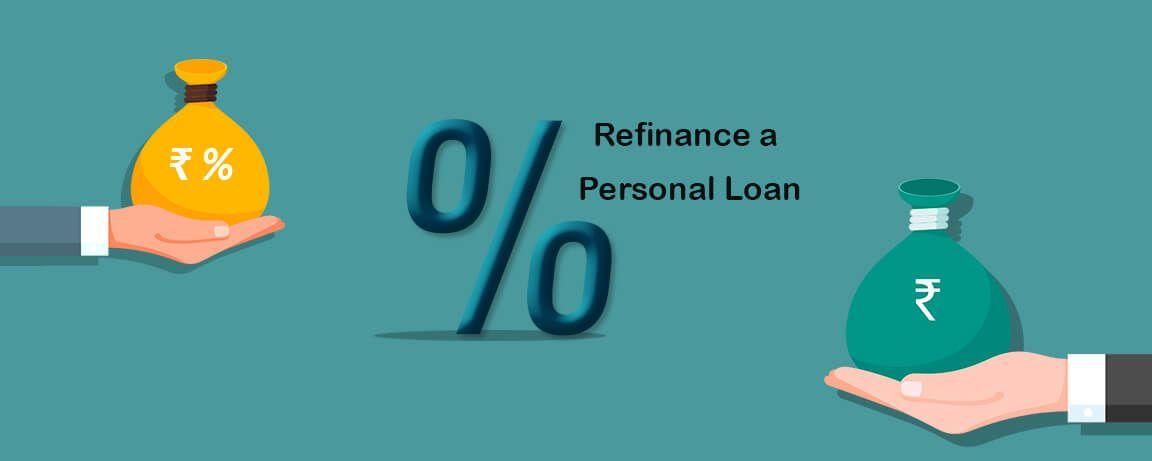Is It Possible to Refinance a Personal Loan?
To refinance a Personal Loan implies transferring your loan from an existing lender to a new lender in exchange for better terms.
Sometimes refinancing is undertaken either to reduce the personal loan interest rate or to shorten the tenure of the loan. The idea here is to make the credit cheaper, or in case that can’t be done, then to make it as short as possible so as to save on the interest outgo in the long run. While this may sound like a great idea, a Personal Loan refinancing may or may not be the ideal step for everyone.
One of the most significant reasons behind getting a credit refinanced is to reduce the interest rates levied on the loan. This can happen in one or more of the three cases:
- When the prevailing interest rates witness a dip
- When your income increases significantly
- When your credit score improves
While this may look like an amazing alternative, you must consider the following aspects before taking a call:
- Refinancing a loan usually comes with certain costs, such as foreclosure fee charged by the existing bank, and processing fee, legal fee and/or documentation fee charged by the new bank. You ought to weigh, whether your savings from refinancing will outweigh these additional charges or not. If there is only a marginal difference, you may be better off sticking with you recurrent bank.
- When choosing to refinance a loan, you should understand that the process will only benefit you significantly, when you are still in the early stages of repayment. Considering your tenure is five years, you should just opt for refinancing when you have only been repaying the loan for less than three years. This will give you ample time with the new loan terms to actually benefits from them in a significant manner.
- Refinancing a loan can make sense when you wish to simply change the type of interest type from floating to fixed, especially the prevailing interest rates are on the rise, and you are looking for some stability with respect to our payment. On the other hand, if the rates are continually falling, you may want to switch your loan type from fixed to variable, in a bid to profit from the ongoing market trends.
- In some cases, refinancing a loan can come to your rescue, when you are unable to shell out hefty EMIs each month. In such a case, you can extend the tenure of your loan, so that the amount per EMI is lowered, and is more in line with your ability to pay. However, in this case, you must remember that you will end up paying more interest over the term of your loan.
- In a vast majority of cases, your new lender will be keen on analysing your repayments history. More often than not, a credit score lower than 600 will rob you of the chance to get your loan refinanced. If you do get the loan refinanced, it will often be at an interest rate equal to or even higher than your existing mortgage, thus rendering the process useless.
- Your new lender will also pay keen attention to your debt-to-income ratio, and will only grant the loan if your debt-to-income ratio is less than or equal to 50%. Anything more than 50% will most likely disqualify you for the refinancing option.
- You must understand that your new lender will consider the refinance as a new credit at least as far as the documentation is concerned. Hence, you must be prepared with your identity proof, your income proof, your bank statements for the past 3 months, your income tax returns for the past three years, and any other documents that the bank may need in order to approve the refinance request.
- In addition to the standard documents, the bank may also ask you to submit the proof of complete or at least a minimum of 95% of prepayment of your existing loan. You must get in touch with the relationship manager at your new bank to understand the specific requirements.
What to Do When Personal Loan Refinancing is Not Possible?
Given the numerous variables and factors involved in Personal Loan refinancing, it may not always be the best idea for you to undertake it. In such a case, you can conveniently rely on some other approaches such as those mentioned below to enjoy similar benefits:
- If you merely want to reduce the tenure of the loan, you can go ahead and make prepayments towards the principal amount, while also paying your regular equated monthly instalments (EMIs). This will help you pay off the loan in a faster manner, without having to go through the formalities of approaching a new lender and paying the upfront charges.
- If your repayment history does not match the standards set by the bank, you can opt for a top-up Home Loan instead. Since a top-loan is secured and is taken over and above your Home Loan, which has already been approved by the lender, you are more likely to get an approval without much deliberation by the authorities. Moreover, this line of credit accrues a comparatively lower rate than the Personal Loan interest rate, thus putting you at the benefiting end.
We hope that you now know all that there is to about getting your Personal Loan refinanced. It is highly recommended that you analyse all the aspects as mentioned earlier before zeroing in on your decision to get the credit transferred to a new lender. After all, when it comes to personal finances, an informed decision can help you enjoy incredible financial freedom!
